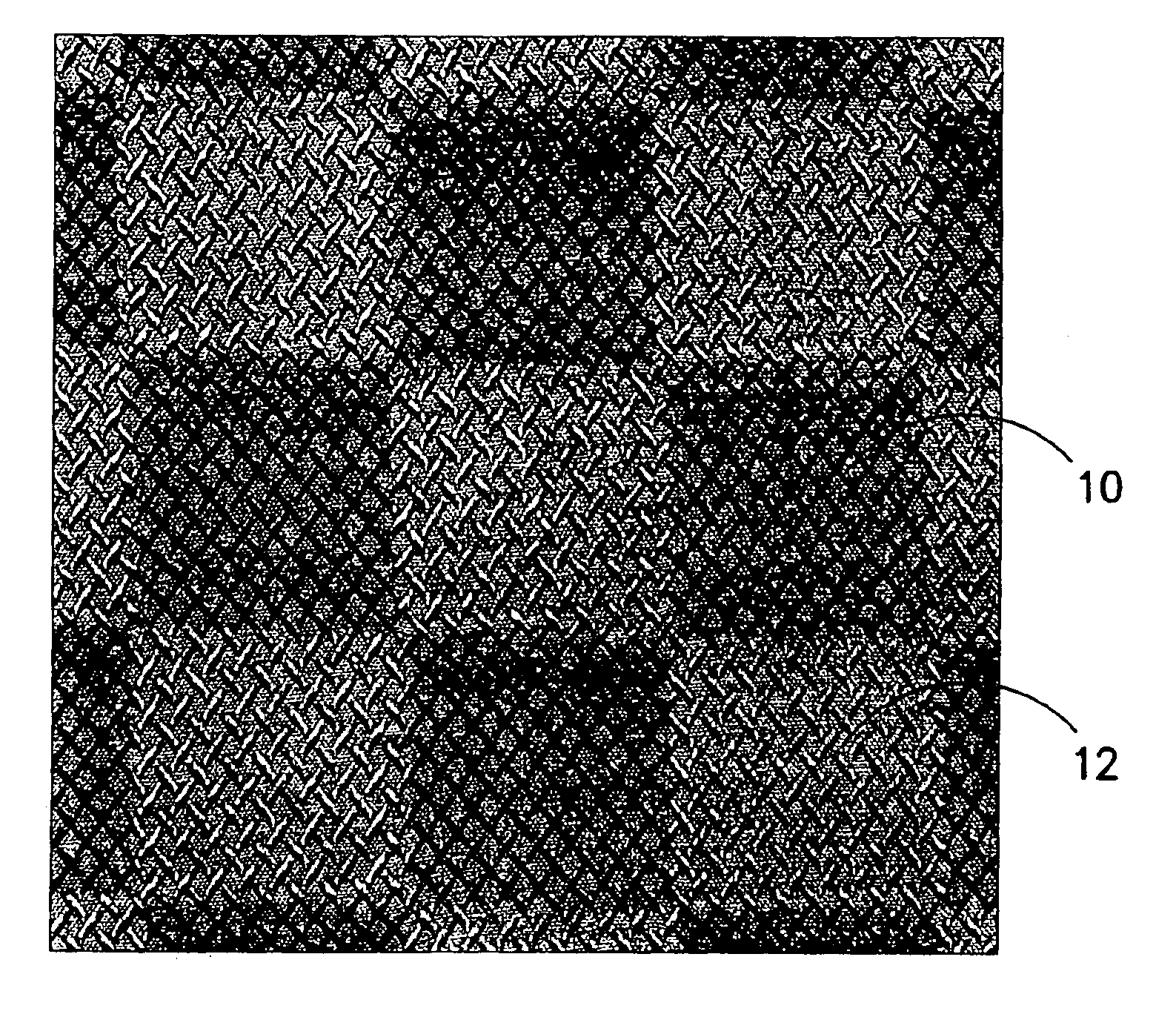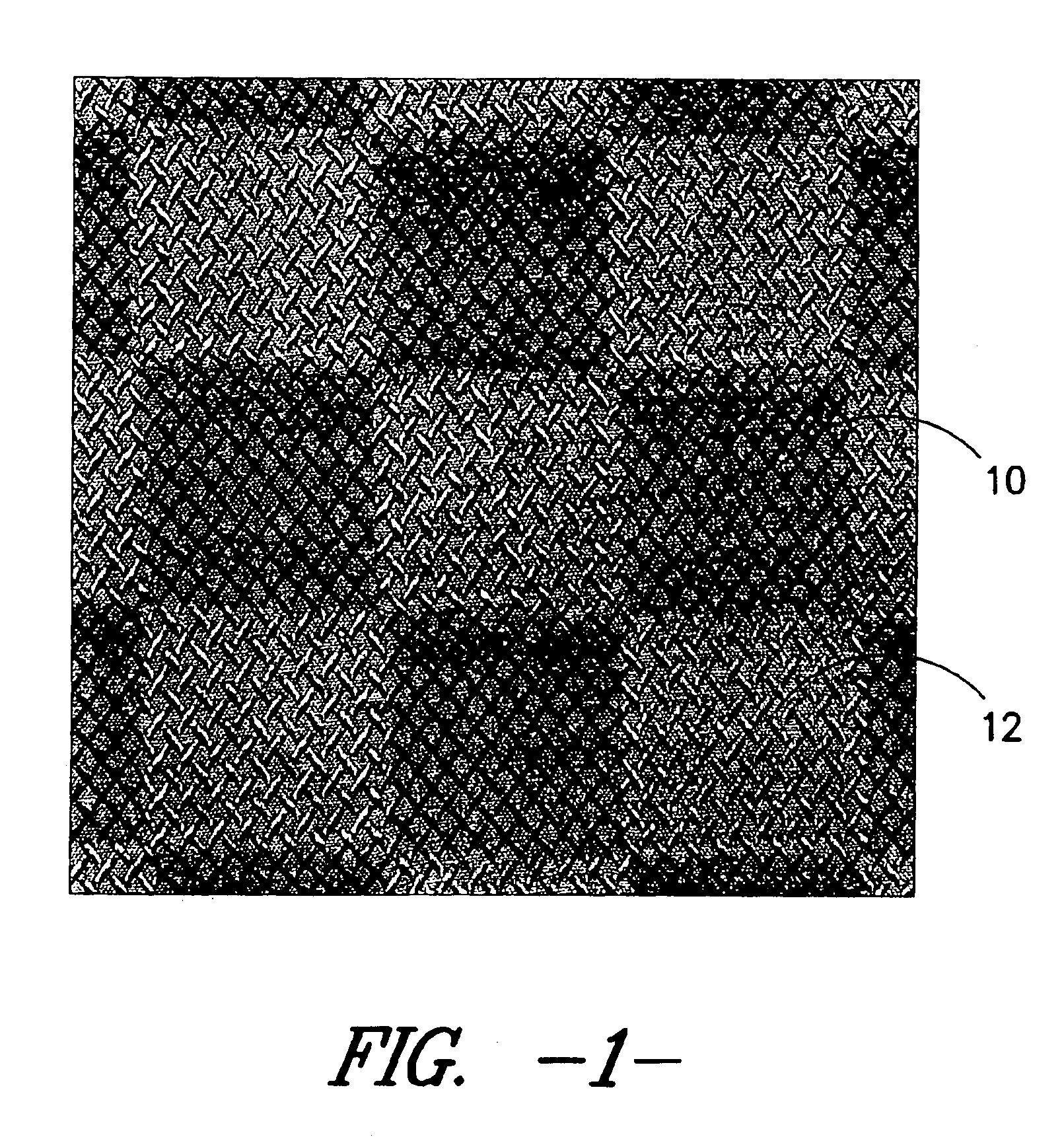Multi-colored fabrics made from a single dye formula, and methods of making same
a multi-color fabric and dyeing technology, applied in the dyeing process, textiles and papermaking, physical therapy, etc., can solve the problems of adding cost, labor and time to the creation of the final product, and traditional dyeing is done at a much higher cost than dyeing a solid fabric, and the method of producing tone-on-tone effects is limited
- Summary
- Abstract
- Description
- Claims
- Application Information
AI Technical Summary
Benefits of technology
Problems solved by technology
Method used
Image
Examples
example a
[0029]A dobby weave fabric made from 100% disperse polyester having 1 / 150 / 34 56T polyester available from E.I. duPont de Nemours of Wilmington, Del. in the warp and filling with a construction of 74 ends per inch by 60 picks per inch. The fabric had a greige weight of 2.85 oz / sq yard. The fabric was desized and dried, then treated using a hot fluid treatment of the variety described in commonly-assigned U.S. Pat. Nos. 4,499,637 and 4,670,317 to Greenway at 680° F. and 3.6 psi at a treatment speed of 4 yards per minute, to produce 1.5 inch squares in a checkerboard pattern. The fabric was then dyed in a pressurized jet using conventional auxiliaries (0.1% sequestrant, 0.9% acetic acid) with the following: 0.1% Dianix Pink AM-REL 100% paste, 0.1% Foron Navy SR 100% paste, and 0.1% Dianix Yellow AM-5G powder. All percentages are on weight of fabric “owf”. The dye cycle consisted of a ramp rate of 2° F. to 250° F. and hold for 30 minutes, and ramp down at 2-4° F. / minute. The fabric was ...
example b
[0031]The same fluid treatment and dyeing process as described in Example A was performed on a 3.5 oz / sq.yd hydroentangled 100% polyester spunlace non-woven fabric containing 1.3 dpf 2.5 inch long polyester staple fiber. The same multi-color pattern effect was seen on the non-woven. An additional attribute that was discovered was that the thermal modification of the fabric surface prevented pilling without hurting the fabric hand. This attribute was durable through dyeing and through at least 15 commercial laundries. For example, the above-described fabric exhibited a pilling rating of 4.5 after 30 minutes when tested according to ASTM 3512-02 Test Method after 15 washes according to AATCC 130-1995 wash procedure.
[0032]In addition to achieving unique multi-colored effects, the process of the invention produces fabrics that have colorfastness levels that are the same as those of the individual dyes used to achieve them (which are typically superior to those achieved by conventional p...
PUM
| Property | Measurement | Unit |
|---|---|---|
| temperature | aaaaa | aaaaa |
| temperature | aaaaa | aaaaa |
| temperature | aaaaa | aaaaa |
Abstract
Description
Claims
Application Information
 Login to View More
Login to View More - R&D
- Intellectual Property
- Life Sciences
- Materials
- Tech Scout
- Unparalleled Data Quality
- Higher Quality Content
- 60% Fewer Hallucinations
Browse by: Latest US Patents, China's latest patents, Technical Efficacy Thesaurus, Application Domain, Technology Topic, Popular Technical Reports.
© 2025 PatSnap. All rights reserved.Legal|Privacy policy|Modern Slavery Act Transparency Statement|Sitemap|About US| Contact US: help@patsnap.com


